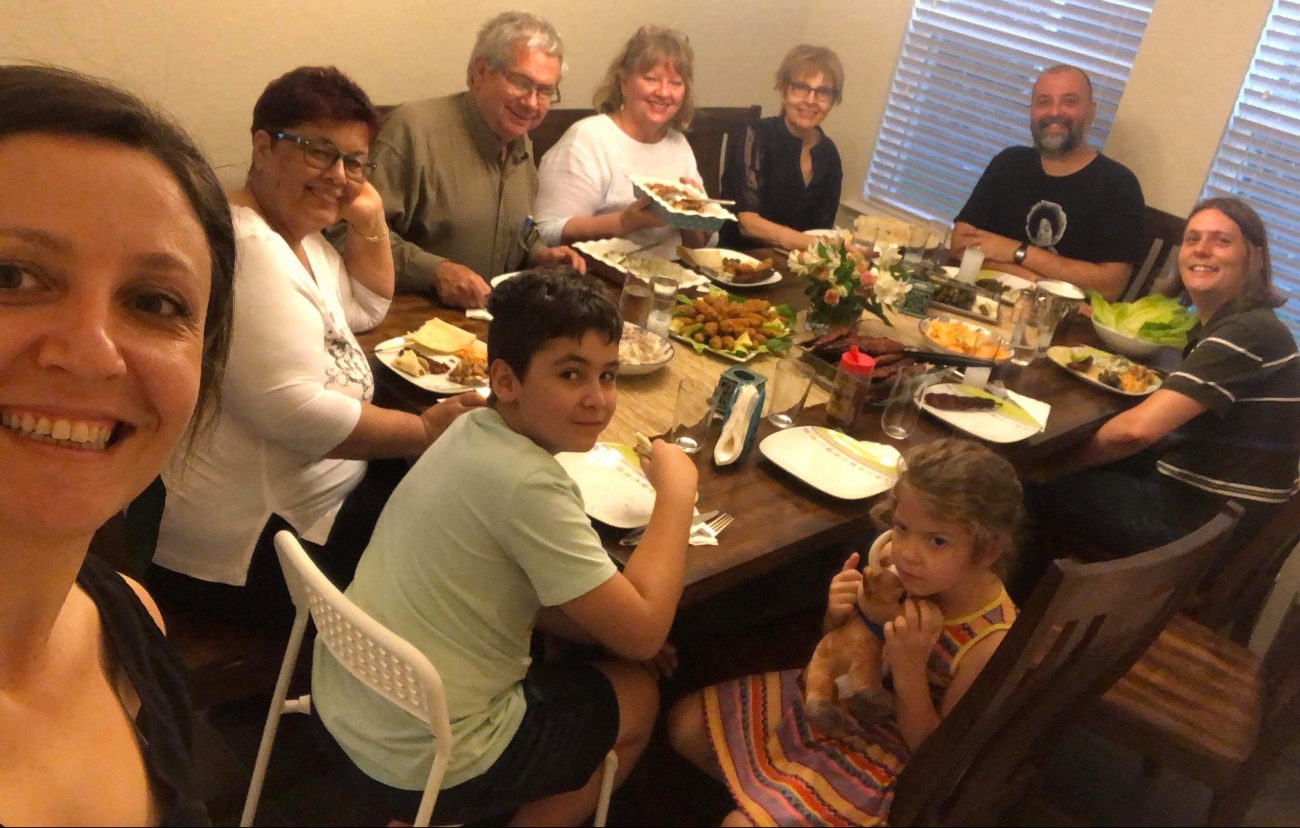 Many students have photos like this one on their phones, and they provide an example of the material we can draw on to create community in an online classroom.
Many students have photos like this one on their phones, and they provide an example of the material we can draw on to create community in an online classroom.
The following five icebreakers are fairly simple and do not require specialized technology or skills. They work best when students are given questions or tasks ahead of time — to reduce the threat of silent pauses. Other factors like the size of the group as well as a mute policy can also improve the flow. Since it’s not always possible to make eye-contact, a classlist of attendees is also important for nominating. .
While the activities are meant as language warm ups or fluency practice, students often appreciate a follow up feedback session. They can also be adapted to focus on specific vocabulary or grammar.
- ONE MINUTE QUESTIONS
Give students personal questions and let them choose one to answer before they come online. The only rule is that they must speak for one minute. Below are some possible questions, or you can write your own.
Questions
- What activity makes you happy? Explain.
- What is your biggest fear?
- Who is the most interesting person in your life?
- Where do you take guests and visitors to your city?
- What is your favorite color, number, animal? Why?
Another option is to assign a question that each student can ask another student, and then direct the question-asker to reiterate what the peer has said. Again this will work best if students have prepared answers to all the questions before.
With larger classes, you can model the activity and then put students in break out rooms to increase talk time.
- GROUP RESUME
Put students in groups and have them create a resume that lists what they can accomplish as a team. If you want to raise the challenge, have them also work out what kind of business they could start.
To provide scaffolding, send out the instructions and have them think about their individual response before they meet in the group. Suggest a few categories for them to consider. You can also appoint a reporter for each group but let the team practice working out the details and turn taking for the activity.
- Languages
- Work skills
- Artistic talents
- Personal characteristics e.g., organization, creativity, home repair
- Other areas of expertise
- SCAVENGER HUNT
This activity has two steps. On the first day, have students create a profile that tells about their lives and history. Invite them to include a photo and information that they would like to share with the class. You can leave it to students to decide what is on the profile or you can give everyone a set of questions to answer.
Once their profiles are done, you can use the information to create questions. True/False are the easiest. Then answering them can be set as a race. Or you can create open ended questions that can later be used for a more extended conversation perhaps in a smaller group.
Depending on the profile, these questions might include the following:
- Who has traveled somewhere interesting?
- Who has a big family?
- Who is athletic?
- Who has an interesting job?
- Who is the most similar to you?
- PHOTO OP
Have students each send you a photo from their phone that depicts the student with another person or in a group. Collect the photos and create a document or powerpoint that has each photo with the person’s name, one per slide, screen view. Once you have this content, use it for conversation practice in different ways:
The easiest way and/or for lower levels is to have each student explain his or her photo to the class for one minute. You can time them so their explanation is neither too long or too short.
For a challenge, have others make guesses about a classmate’s photo. In a small group (8 or fewer), invite or nominate students to guess where the photos were taken and who the people are. (If they’ve had a chance to preview the powerpoint, this will go more smoothly.)
- ELABORATION
Screenshare a document with a chart that has categories and topics such as the one below. Give the students a minute to reflect on the topics and ask questions about vocabulary. Tell them they will need to pick one square to speak about for one minute. Explain whether you will keep all possibilities open throughout the activity or black out each one out after it has been selected – this encourages students to volunteer early on. Then have students speak for a set time. (Usually one to two minutes)
| Preferences | Stories | Explain/give an example |
| Brains or beauty | A childhood adventure | A bird in the hand is worth two in the bush. |
| The past or the future | An insect or animal encounter | What doesn’t kill you makes you stronger. |
| City or countryside | A coincidence | Every cloud has a silver lining. |
| Dog or cat | A weather event | The writing is on the wall.
|
There are many ways to adapt the basic activity. You can change the categories and topics. You can also give students a free topic.
These activities may feel a little awkward at first, but they still hit the goals of bringing students together to speak and understand, and when that happens, they usually smile.
For more community builders, check out our post on kinesthetic grammar.
Categories: Alice Savage, Alphabet Publishing, Colin Ward, Conversation, EFL, ELT, English Language Teaching, ESL, ESOL, online ESOL, TESOL
2 replies »